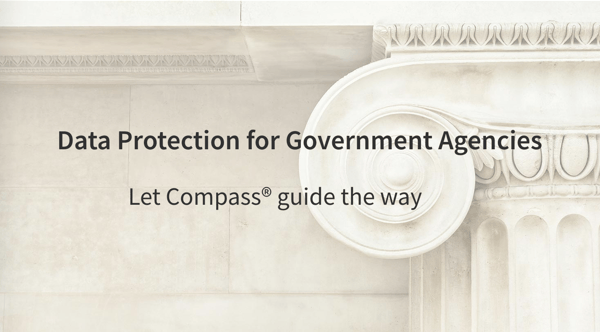State and local government entities have critical and unique requirements when it comes to data backup, protection, and recovery. With malware and ransomware attacks on the rise, particularly in the public sector, protecting data while also containing the rising cost of cyber security should be job one for any government IT department. It’s not just common sense, it’s essential to an agency’s role as trusted servant to the public.
State and local governments are sitting ducks for costly cyberattacks – which are on the rise.
The malware threat to government is soaring. In 2019, 140 ransomware attacks targeted public, state, and local government and healthcare providers – an increase of 65% over the previous year. Last December, four U.S. cities, including New Orleans and Pensacola, Florida, were hit with ransomware infections that sabotaged or halted essential government services.
As stewards of public funds, governments can’t afford the high costs associated with a ransomware attack. In addition to the criminals’ initial ransom for releasing the captive data (should the agency choose to pay it), the costs of data recovery and cleanup can be staggering and stretch into months and even years. And these are just the monetary costs – the loss of reputation and public trust can be insurmountable.
 Why are government entities such prime targets for Cyber Attacks?
Why are government entities such prime targets for Cyber Attacks?
According to Public Sector 360, government agencies such as municipalities, educational institutions, and healthcare facilities are nearly twice as likely to be infected with malware and ransomware as other types of business organizations. There are two primary reasons:
- The types of data with which these entities are entrusted. This is particularly true for state governments, which hold a vast amount of data about citizens including personally identifiable information such as Social Security numbers, driver’s license information, and tax and financial information.
- The availability of public funding to fight ransomware attacks. It’s just common sense: the more funds that are available for an agency to meet cyber criminals’ demands, the more likely they are to be attacked – and attacked again in the future.
Secure backup: the last line of defense
Data backup systems are an especially rich target of cybercriminals. Not only is all critical data consolidated in a single platform, but criminals know that the backup system is the last line of defense when all other options for recovery have been exhausted. If the crooks really want to hold the operation hostage, they take out the backup system. It’s all the more reason for agencies to choose a backup system that will stop cybercrime in its tracks, with security features woven into the core architecture, not bolted on as an afterthought.
Here are the most important elements of a secure backup solution for government agencies:
- Human-less operations – not only helping agencies save on limited resources but make the backup infrastructure and data inaccessible
- A design based on containment and immutability of the data
- Data encryption, both in-flight and at-rest
- Features for ransomware responsiveness, readiness, and recovery
- Data governance for auditing and compliance meeting regulatory requirements and being ahead of any disaster
Compass: Reducing Cyber Risks and Costs
As an enterprise-scale data protection solution, Compass uniquely addresses the data security concerns of government entities at all levels. The Cyber Shield security features built into every deployment of Compass, including industry-leading ransomware protection, a pay-as-you-grow SaaS delivery model, and extensive automation, are all geared toward helping government agencies mitigate risks AND reduce costs.
View our free webinar to learn plenty more about the growing threat of malware and ransomware to state and local agencies and how Compass is uniquely designed to help ensure readiness, response, and recovery. And connect with our team today for a free demo and data protection consultation.
< Back to Blog